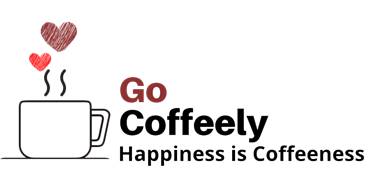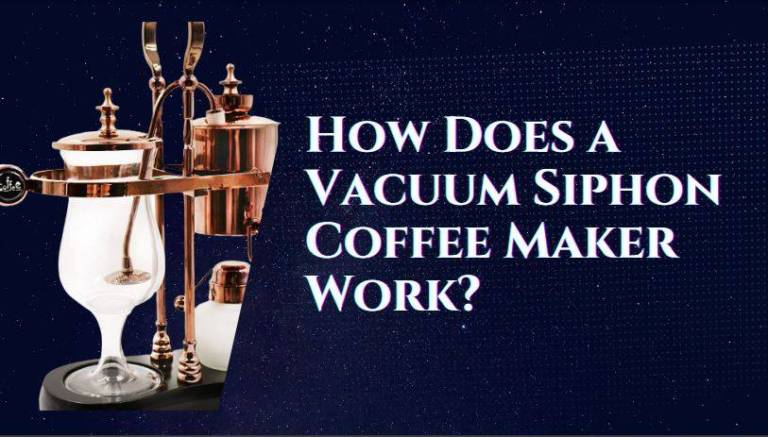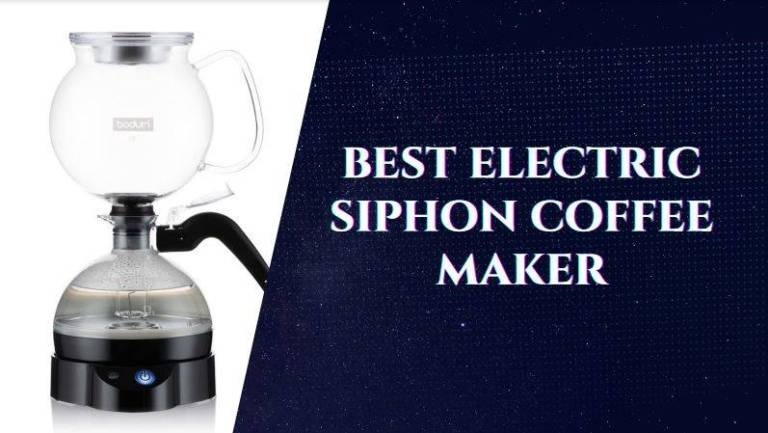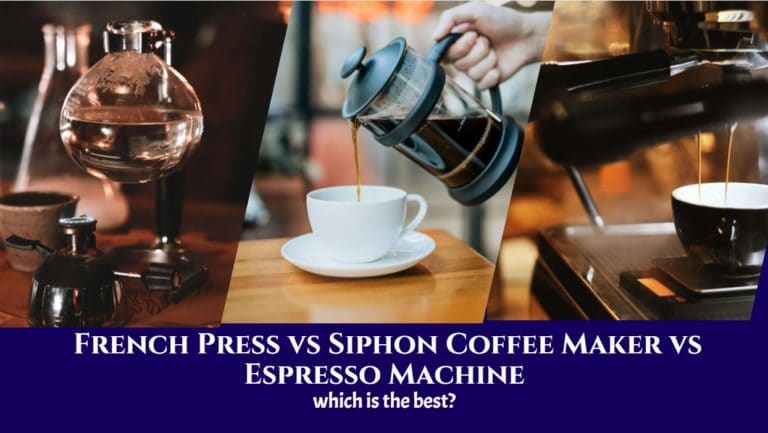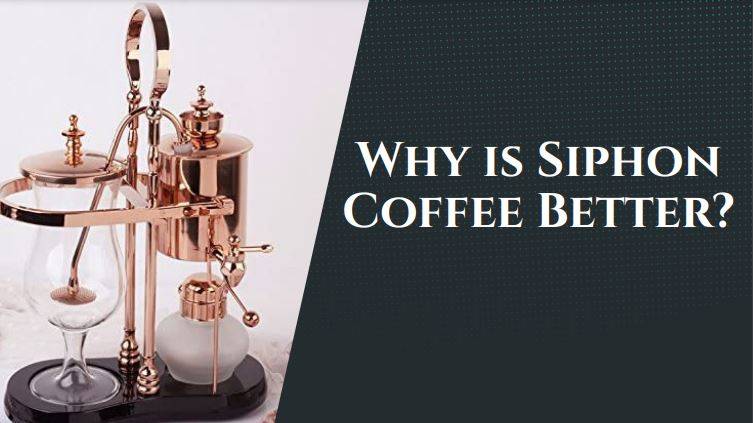Siphon Coffee Maker vs Pour Over Coffee Maker: Which Coffee Maker Is Right For You in 2022?
If you’re looking for a new way to brew premium coffee, you’ve probably heard of siphon coffee and pour overs — two different brewing methods that produce two very different results. But which is the best method for your home?
These two coffee makers are both traditional brewing methods that produce a cup of coffee that is brewed over several minutes. They are also both used in specialty coffee shops around the world, but they are very different in their construction, brewing processes and uses.
TABLE OF CONTENTS
Siphon Coffee Maker
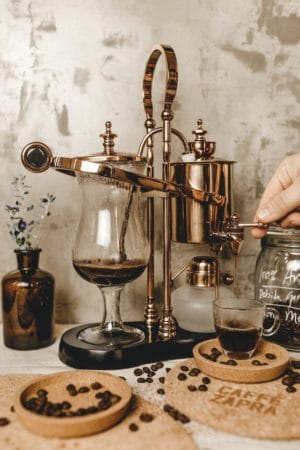
A siphon coffee maker uses a vacuum to brew the coffee. The vacuum allows the extraction of all elements in the coffee bean, so the cup of coffee is more balanced than that made by conventional methods (such as paper filter or percolator).
Siphon coffee makers create a vacuum in the lower chamber using hot water to brew the coffee by filtering through grounds above the waterline.
Once the brewing completes, the siphon sets on a stand where the water can be slowly released back into its lower bowl and re-heated for another round of brewing.
This process creates an intensely flavored coffee that is remarkably smooth in taste. Since no paper filters or grinds are involved in this brewing method, only clean, clear water passes through an inner filter that eliminates any sediment from reaching your cup or mug.
The heat source can either be a gas burner (flame) or electricity via induction heating coils at the base of the siphon. Since many consider it an art form, some people swear by this brewing method and appreciate the clean flavors and easy clean-up afterward.
TIP: It’s very important to use fresh, high-quality coffee beans for the best flavor results. Cold filtered water improves brew to taste, while spring water or filtered tap water are recommended if you don’t have access to a quality source of cold filtered water.
The water temperature should be between 195 °F and 205 °F (91 °C), allowing about 4 minutes of brewing time(I also recommend using a timer). The ratio should be around 1 tablespoon per 5 oz cup, but I prefer less coffee than more because any style brewed at too strong can easily become over-extracted (bitter).
Pros of Siphon Coffee Maker
In addition to rich flavor, there are other advantages as well:
It is a very visual process to watch your coffee being brewed using this method as compared to other methods available.
The lever mechanism is specifically designed for clean and even extraction. It’s kind of like an Italian espresso machine without pressure brewing.
Clean-up is easy given that there are no paper filters involved; hence, it requires less time to dispose of your used grounds for quick clean-up.
Since there is no paper filter (which absorbs some crucial elements in our cup), siphon coffee tastes purer than usual
In addition to richer flavor and fresher taste, each cup also has a more “mouth feel” than other brewing methods
Siphon coffee makers are usually smaller sized, so they make great decorative pieces on your desk or countertop
Ease of use: A+ for beginners/intermediary/experienced users
Cons of Siphon Coffee Maker
- For those who are particular about visual presentation, brewing time may be too long to wait when it comes to serving a large group of people (although not much different from drip machines).
- Cleaning this device takes longer than automatic machines, though the filter does eliminate any coffee grinds that may clog.
- Since each component is made of glass (including the upper chamber, the lower chamber, and the lid), you will need to be extra careful when handling it as it can easily break if dropped or broken by mishandling.
Pour-over Coffee maker
Pour overs are becoming increasingly popular in the past few years. This kind of brewing method has three main types (hand pour-over, drip cone, and mesh filter).
A traditional pour-over consists of an upper container with a filter inside and a lower container that holds hot water during brewing.
The grounds are placed in the filter, and then hot water is poured over them. As the water seeps through, it carries some of the coffee’s flavor with it. It drips into a carafe or cup at the bottom.
Unlike drip brewing that uses gravity to pull water through the grounds, pour-over relies on you controlling how much water to use. This helps ensure that each cup has an even flavor profile since different amounts of coffee can be brewed depending upon how much water you pour over the grinds.
The advantage is that coffee lovers can control when pouring hot water, so it’s easier to brew a better cup with fewer things to wash afterward.
The goal is the same: to achieve a smooth and balanced cup. Here are some differences among the three methods:
- Hand pour-over method is probably the most renowned way of brewing pour-overs. A pot (usually resembling Chemex) sits on top of a cone-shaped filter which allows hot water to drip slowly through coffee grounds.
- Drip cones use paper filters that sit inside plastic cones and then drips into a carafe below.
- Mesh filter can be used with both automatic and manual machines as it doesn’t rely on gravity
Pros of Pour-over Coffee maker
Pour over coffeemakers’ pros are similar to those of siphon coffee makers:
- Richer flavor, fresher taste, more “mouth feel,” and cleaner cup.
- Pour over coffee makers is becoming very popular because of their simplicity and not taking much practice to master.
- This method produces lower acidity (meaning less bitterness) in your cup and more clarity; hence, there is no sediment in your cup if your grinds are fine.
Cons of Pour-over Coffee maker
Of course, there are also cons associated with pour-over
- It requires more attention when brewing
- Brewing time is longer compared to other methods
- You need to clean more afterward
- If you want to make a large amount of coffee for your guests, you need to brew more than once.
Siphon Coffee maker vs. pour-over
I would like to compare the two most popular ways of making coffee at home, the siphon coffee maker and the pour-over method. Both are very different in how you make them but have a slight similarity in that they use hot water. They both also can be made with similar results if done correctly.
- The main difference is probably the price of pour-over, which is cheaper than siphon coffee maker.
- For the pour-over brewer, there is no waiting time as all the prep work is already taken care of, while for the siphon brewer, you have to wait around 5 minutes for it to heat up.
- The siphon maker-produced coffee has a slightly stronger flavor than the pour-over method but not by much. For the pour-over method, you are able to get more flavor out of the cup depending on how long you let it sit after brewing.
- With the Pour-over method, you need to watch your water temperature while brewing for it not to get too hot or too cold. Going too slow will also take more time than desired (5 minutes+). With a siphon coffee maker, there is no way of knowing if the water is at a perfect temperature, but it does heat up and brews faster, so even though the taste might be slightly stronger overall, it still brings out more flavor.
Why People Prefer Pour Overs
- The process takes only 3-4 mins to complete. No special care is needed when handling glass components that are prone to breaking if dropped or mishandled (not recommended for children)
- Clean-up can be done easily by loading everything into the dishwasher after each use without any worry of clogs producing sediment leading to a bitter brew.
- Produces less acidity compared to French press since grinds don’t have a chance to come into contact with hot water for an extended period of time, therefore eliminating bitterness.
- It’s much easier when we try to brew directly or via carafe from above vs. using pressurized water.
- When using a pour-over method, all you need are filters which are more affordable than paper ones used in siphon makers.
- This method also allows you to select the amount of coffee that you want in your cup, which is not possible with a siphon maker.
Is siphon coffee better?
So far, there seems no scientific evidence saying that siphon coffees are better than pour-overs. Both of them have good points.
Siphon produces less acidity than pour-over since grinds don’t have the chance to soak in the heated water for an extended period and plenty of other things like possible clogging due to sediment (not found in the siphon method).
But then again, some experts say that this is because not everyone can make a proper cup while using pour-over, which may affect the taste output, but nothing beats fresh grinds and hot water.
FAQs
Which is the best way to brew coffee?
Both of these methods are acceptable ways to brew coffee at home if that is something you want to do. Both methods can be manipulated and customized in order for you to experiment with the amount of control you have over your brews.
Siphon brewer vs. pour-over? Which is better?
It depends upon what you’re looking for as an end result. If you just want good-tasting coffee without any fuss, then either one of these two brewing methods will suffice. The main difference between them would be the time investment and equipment needed.
Which type of coffee maker produces less acidity?
Both methods produce about the same amount of acidity in your coffee, although pour-over cones require a drier and finer grind to achieve optimal results. The taste of your brew will vary depending on the beans you use.
Which method produces the most crema?
Both methods have about an equal chance of producing foam on top of your brews. The main reason that siphon brewers produce more is due to their design, which allows for a richer and fuller extraction than does pour-over cones (again, because they take longer to brew).
Conclusion
Coffee is a favorite drink of many people. Making coffee can be an interesting experience for those interested in the process, but most people don’t have much time to make a special effort in doing so.
This article explains the difference between these two types of makers and why some people prefer using the Pour Over method as opposed to the siphon coffee maker.
